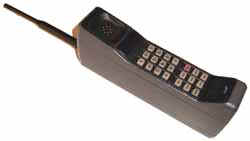- Joined
- Jul 15, 2008
- Messages
- 21,487
- Points
- 113
1. Apple iPhone

Apple was the first company to put a truly powerful computer in the pockets of millions when it launched the iPhone in 2007.
Smartphones had technically existed for years, but none came together as accessibly and beautifully as the iPhone.
Apple’s device ushered in a new era of flat, touchscreen phones with buttons that appeared on screen as you needed them,
replacing the chunkier phones with slide-out keyboards and static buttons. What really made the iPhone so remarkable, however,
was its software and mobile app store, introduced later. The iPhone popularized the mobile app, forever changing how we communicate,
play games, shop, work, and complete many everyday tasks.
http://time.com/4309573/most-influential-gadgets/

Apple was the first company to put a truly powerful computer in the pockets of millions when it launched the iPhone in 2007.
Smartphones had technically existed for years, but none came together as accessibly and beautifully as the iPhone.
Apple’s device ushered in a new era of flat, touchscreen phones with buttons that appeared on screen as you needed them,
replacing the chunkier phones with slide-out keyboards and static buttons. What really made the iPhone so remarkable, however,
was its software and mobile app store, introduced later. The iPhone popularized the mobile app, forever changing how we communicate,
play games, shop, work, and complete many everyday tasks.
http://time.com/4309573/most-influential-gadgets/













